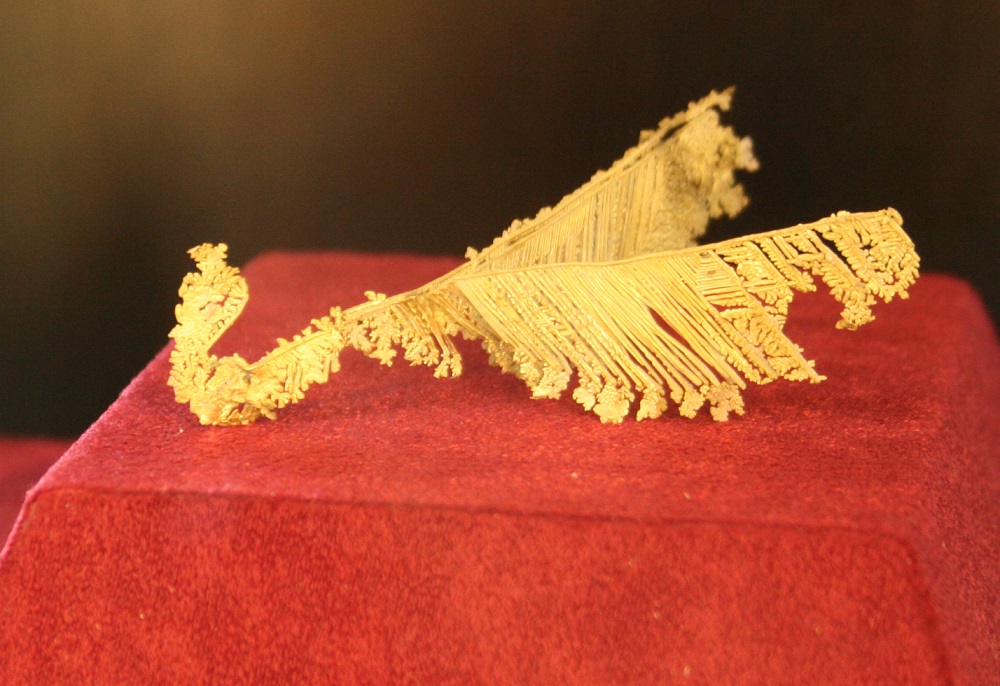The Museum of Gold, an emblem of the site, was set up in 1896. This is where 18 kilograms of native gold are displayed, being the most spectacular and valuable gold exhibits in Europe, represented by rare pieces drawn straight from the depths of the Earth, under the shapes we see them in, today. Their uniqueness and value stems from their composition and the fact that they are in a pure, non-processed, non-finished state, just as nature left them.
The museum’s collection contains over 2,000 exhibits, of which 1,300 of pure gold or with gold in their composition, starting with thin sheets (lamellas, spikes, fibers, dendrites, grains) and ending with more consistent shapes (crystals, nuggets).
The most important are the native gold exhibits, originating from the Metaliferi Mountains. All gold exhibits are 12 to 22 karats and come in different shapes suggesting plants, leaves, flowers, snake, lizard, dog, bird wings etc.


The most spectacular pure, unprocessed gold figurines are: “The Lizard”, “The Flamenco Dancer”, “The Map of Romania”, “The Dacian Flag”, “The Ballerina”, “The Wings of the Angel”, “The Writer’s Pen”, “The Tree of Life”, “The Lion”, “The Shellfish”, or “The Dinosaur”.
We may also stumble upon a rich collection of minerals, some extremely rare, such as: nagyagite, sylvanite, tellurium, pseudobrookite, identified, for the first time in the world, in deposits located in the Apuseni Mountains.


Among the exhibits, we also find the archeologic al items discovered in the Brad – Crișcior area, certifying the existence of man in this area, up to more than 5,000 years ago.
Other exhibits include tools used in mining for gold during ancient times, since the Dacian and Roman era, along with suggestive photographs of such activities from the last 200 years. They are joined by other exhibits originating from abroad. Tourists ending up in the area are advised to visit this museum, which is truly fascinating thanks to its gold exhibits.
Sources / photos:


























